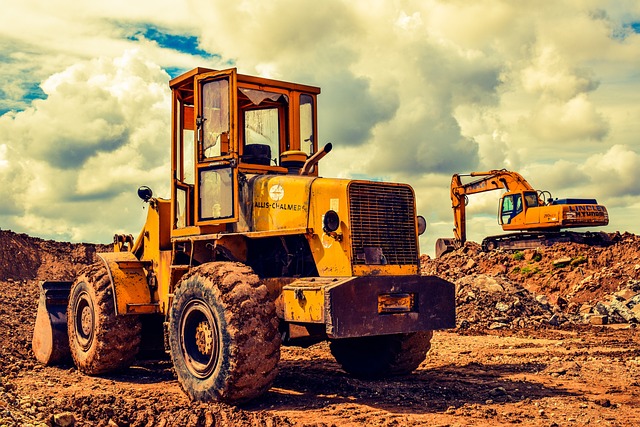Daily Duties, Safety Measures, and Communication Practices for Excavator Operators on Japanese Construction Sites in 2025
Curious how excavator operators maintain safety and efficiency on Japan’s busy construction sites? This article explains their daily responsibilities, key safety procedures, and workplace communication practices in 2025, helping managers and operators understand expectations and comply safely and effectively with Japan’s construction standards.

Daily Responsibilities of Excavator Operators in Japan
Excavator operators play a critical role in shaping construction landscapes across Japan. Their responsibilities typically include:
- Excavating and trenching: Digging foundations, utility trenches, and drainage systems according to precise measurements and site blueprints.
- Site preparation: Clearing land, removing debris, and leveling surfaces in preparation for construction.
- Material handling: Lifting, moving, and placing heavy materials like pipes, beams, or stonework.
- Equipment maintenance: Performing daily inspections and basic maintenance such as checking fluid levels, tire pressure, and hydraulic systems.
- Following work orders and schedules: Ensuring each task is executed according to project timelines and supervisor instructions.
Executing these tasks demands technical proficiency, spatial awareness, and physical endurance to maintain efficiency while avoiding delays or accidents.
Safety Protocols and Standards on Japanese Sites
Japan’s construction industry enforces rigorous safety regulations, making operator discipline essential. Excavator operators are expected to follow these safety measures:
- Pre-operation equipment checks: Inspecting machinery daily for leaks, malfunctions, and proper attachment fit.
- Use of personal protective equipment (PPE): Wearing helmets, gloves, high-visibility clothing, and steel-toed boots at all times.
- Compliance with site safety signage and barriers: Observing restricted zones and respecting signals to prevent collisions or intrusion into hazardous areas.
- Emergency procedure training: Understanding site-specific evacuation plans, first-aid procedures, and equipment shut-off protocols.
- Avoiding fatigue-related errors: Adhering to regulated work-rest cycles and reporting when unfit for duty.
These practices help prevent workplace injuries, maintain smooth operations, and align with Japan’s stringent Occupational Safety and Health standards.
Communication Practices Among Diverse Teams
Japanese construction sites often employ multicultural teams, making clear communication vital. Standard practices include:
- Use of standardized hand signals: Visual cues allow seamless communication between operators and ground personnel, especially in noisy environments.
- Daily safety briefings (朝礼, chōrei): Morning meetings ensure all team members are aware of the day’s tasks, risks, and coordination requirements.
- Multilingual signage and instructions: On sites with foreign workers, instructions are often provided in multiple languages (e.g., Japanese, English, Vietnamese).
- Two-way radios or intercom systems: Used to maintain real-time communication, particularly when visibility is obstructed.
- Cultural sensitivity training: Encouraging respect, clarity, and patience across language and cultural barriers.
Effective communication reduces misunderstandings, fosters teamwork, and is integral to avoiding on-site accidents.
Qualifications and Legal Requirements
To legally operate an excavator in Japan, individuals must:
- Hold a Construction Equipment Operator License (Kensetsu Kikai Untensha Shikaku) for machines over a specific size or capacity.
- Complete mandatory safety training through authorized programs regulated by the Ministry of Health, Labour and Welfare.
- Receive ongoing training to stay current with evolving safety standards and equipment technologies.
These qualifications ensure operators meet the high professionalism and safety expectations of Japanese employers.
Documentation and Reporting Duties
Operators are also responsible for maintaining accurate records, such as:
- Daily operation logs: Documenting equipment use, operating hours, and task completion.
- Inspection checklists: Recording pre- and post-use equipment status and any maintenance performed.
- Incident and near-miss reports: Required immediately after any safety breach, hazard encounter, or equipment issue.
Such documentation supports transparency, safety compliance, and efficient project management.
Work Culture and Expectations in Japanese Construction
Japanese construction sites emphasize punctuality, precision, and mutual respect. Operators are expected to:
- Arrive early and participate in group exercises (ラジオ体操, rajio taisō) to promote alertness and team bonding.
- Maintain cleanliness of their workspaces and equipment.
- Respect hierarchy and authority, following directions from supervisors without deviation.
- Show consideration for nearby communities by minimizing noise and disruption where possible.
Embracing these values allows foreign and domestic workers alike to integrate and thrive in Japanese construction environments.
Conclusion
In 2025, excavator operators on Japanese construction sites are expected to handle diverse, demanding tasks with precision and care. Success in the role requires technical ability, strict adherence to safety standards, clear and respectful communication, and a strong sense of responsibility. With the right qualifications, training, and attitude, operators contribute meaningfully to Japan’s efficient, safety-conscious construction sector.
Sources
- Link-Belt Excavator Operator’s Manual (2025).
- Yokota Air Base Civil Engineering Squadron Vacancy Announcement (2025).
- Industry insights on Excavator Operator duties and safety protocols in Japan (2025).
Disclaimer: This article offers general information about the duties, safety protocols, and communication methods for excavator operators in Japan. Specific job conditions, safety standards, and requirements can vary by employer, project, and region. Readers should verify details with local authorities or employers to obtain current and applicable guidelines.
